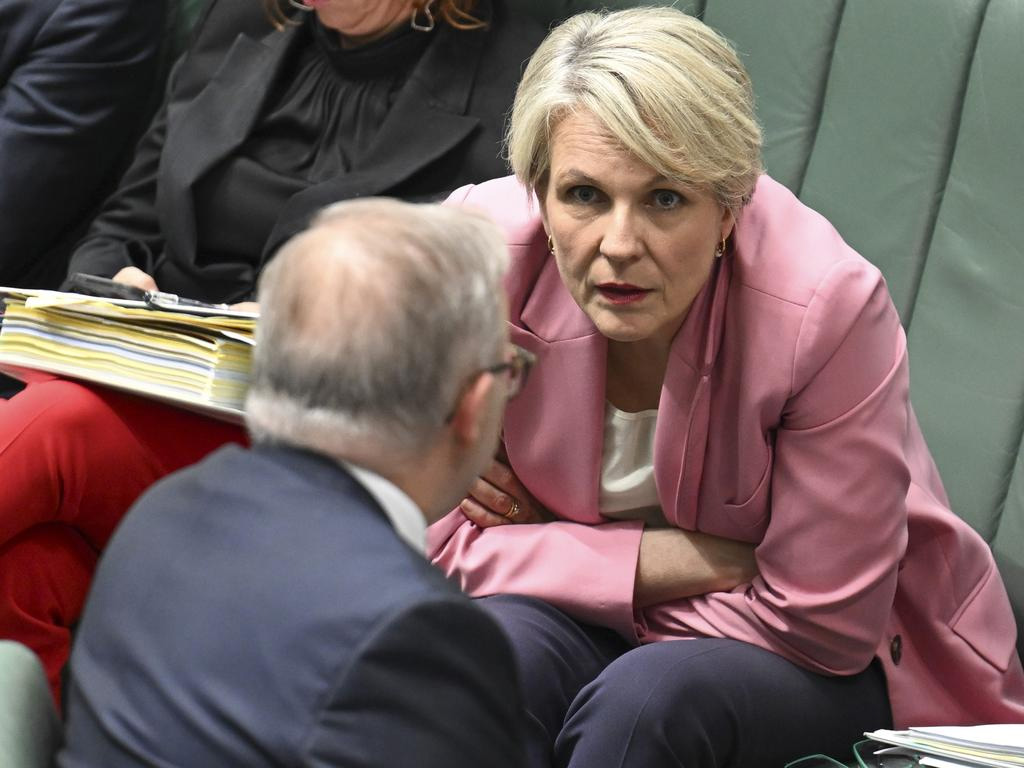
Article by James Dowling, courtesy of The Australian.

There was “no person” on Tanya Plibersek’s staff who could tell if the Blayney goldmine could recover from her heritage decision, department documents show, despite later assurances there was “no impediment” to it.
In newly released advice, Department of Climate Change, Environment, Energy and Water staff detailed the “extensive process” needed to assess alternate sites for a tailings dam attached to the McPhillamys goldmine, which threw the project into disarray after it was blocked by a heritage protection declaration.
“Given the extensive process involved in assessing areas from a number of different perspectives, performing consultations and obtaining a number of approvals, and the time and expense involved, no person is in a position to advise the minister whether an alternate location is feasible,” states a departmental analysis, provided to inform Ms Plibersek’s final decision and released under Freedom of Information laws.
It sits in contrast to statements from Ms Plibersek and Anthony Albanese, who grew increasingly emphatic over the weeks following the decision in downplaying the financial impacts upon mine developer Regis Resources.
When Ms Plibersek wrote her subsequent statement of reasons, she conceded she was “satisfied that a partial declaration would make the proposed mine unviable in the state in which it is currently proposed and approved”, though left the door open for an alternate proposal.
By August, when her decision was made public, she would argue it was in Regis’s interest “to put a bit of time and energy” into a solution.
“This is a large company. They’ve got geologists and hydrologists and engineers available to them,” Ms Plibersek said in September, denying having axed the project.
In addressing the decision, the Prime Minister gave the most emphatic defence yet.
“There’s no impediment to the mine,” Mr Albanese said. “There are other proposed sites for the tailings dam.”
Though the departmental advice provided no certainty of a viable alternate proposal, it still recommended Ms Plibersek declare she was “satisfied that it may be possible for the proponent (Regis) to assess the more than 30 alternative options to find a suitable alternative location”.
The department’s recommendation runs counter to independently selected heritage assessor Ruth Elvin’s summation that protection to the Belubula river waterways would “likely mean the project is not feasible, as the mine itself cannot be moved”.
Regis has maintained since the site was blocked that it left the project non-viable.
In September, The Australian reported from four sites spruiked by government; three overlapped the heritage site, and the fourth was assessed as having the most detrimental impact to the surrounding community, river and environment.
A reassessment of the site’s viability and value to the local economy could be especially pertinent if the mine developer is successful in its Federal Court bid against Ms Plibersek.
Victory in the judicial review would leave a different Labor minister with the task of going back through the full evidence of the proposal and re-evaluating the heritage decision under Section 10 of the Aboriginal and Torres Strait Islander Heritage Protection Act.
While the mine’s future viability would likely have little bearing on whether the site was found to have Indigenous cultural significance, it could change whether the minister opted to provide heritage protection.
Under the act, if an alternate minister finds the mine is of great community value and has no alternate form, it could be decided the project may still go ahead on the grounds of its local value.
Regis may face an uphill struggle in lobbying such a decision, however, with the same trove of documents indicating debate had emerged late in the decision-making process over whether the value of the project had been correctly estimated.
A social impact report by academic Alison Ziller, commissioned by environmentalists with the Belubula Headwaters Protection Group, argued Regis had overstated the project’s economic benefits, saying the “community is better off if the project does not go ahead”.
Additional submissions pointed to a November 2021 Regis AGM at which the chief executive of the time speculated “the McPhillamys project may not result in a profit for the company, but the surrounding satellite projects have prospect”.
This AGM took place before Regis had completed its own viability assessment for the project.
